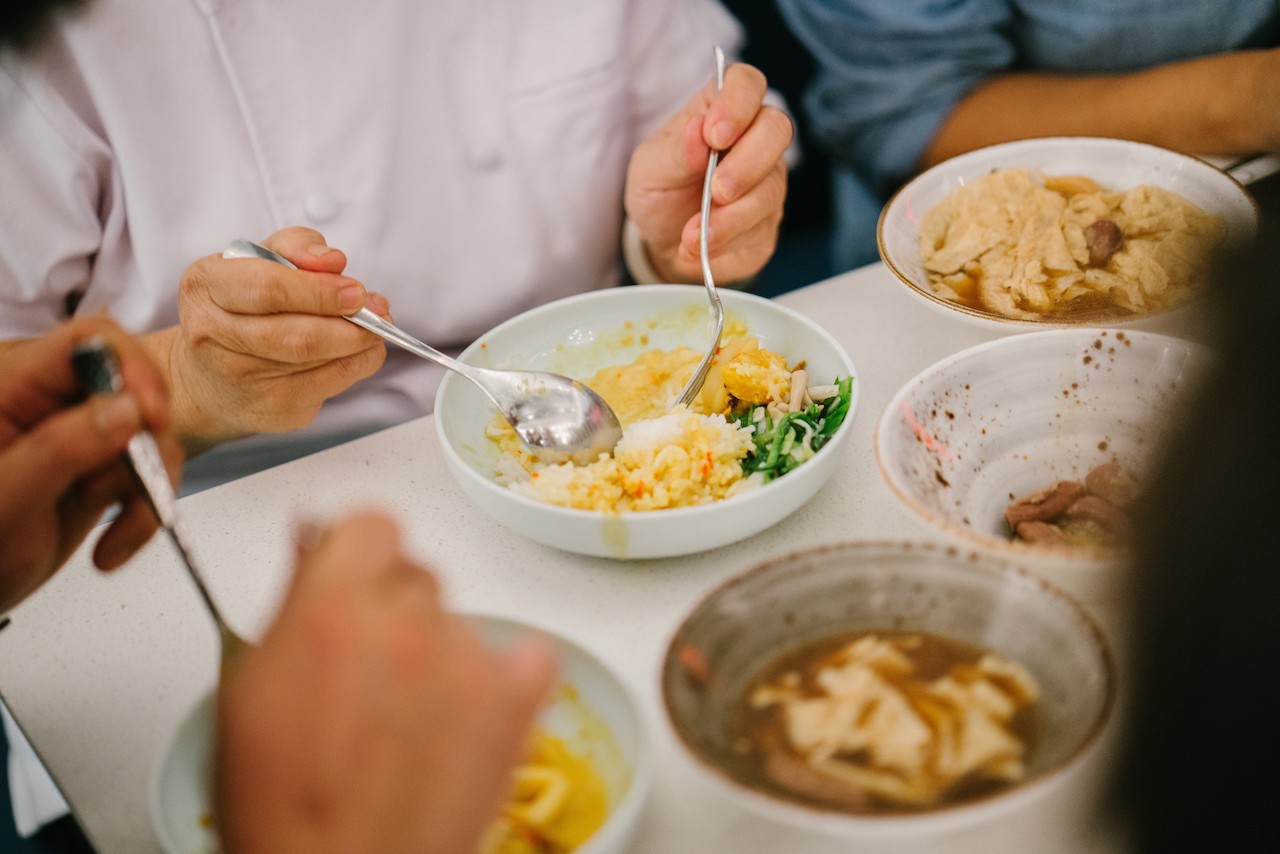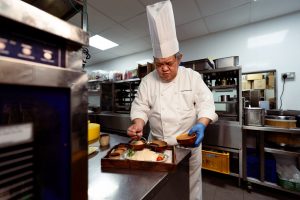As with most seemingly glamorous jobs, there’s always a tendency to romanticise what we don’t see. Pastry chefs, for instance, all have friends who think their work is just eating macarons. Baristas are envied for all the free coffee they get during shifts, and chefs have to smile and nod when others tell them, “You get to eat good food and do what you love! You’re so lucky!”
Those who work in F&B know better, that work often entails cramped spaces, high pressure, and hot tempers. And behind all this is also the open secret that is how people working in the industry eat—terribly.
Granted, it isn’t like this everywhere.
When I drop by VENUE By Sebastian, located at Downtown Gallery in Singapore’s Central Business District, the team is just settling down to a meal prepared by Ann Ting, the mum of 42 year old chef-owner Sebastian Ng. Everyone affectionately calls her ‘Auntie’, and she’s been working with Sebastian ever since his days at the now-closed Restaurant Ember.
That day, their late lunch/almost dinner consisted of white rice, squid curry, stir-fried vegetables and pork rib soup with pig’s intestines and tau kee. It felt exactly like it would at a family dinner table, and not just because Sebastian’s aunt, wife, mum, and cousin-in-law also work with him. As jokes were traded and Auntie plied everyone with food, I saw friends and hard work, not hierarchy.

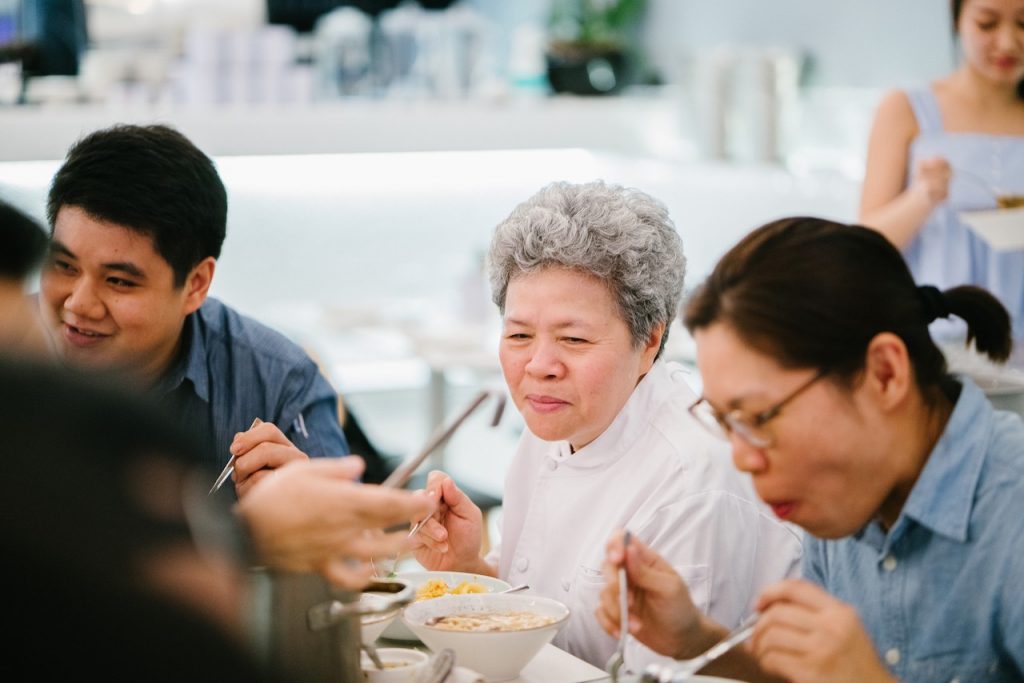
When I asked why that was even allowed to happen, he said it was food that senior chefs cooked for junior ones. When the food was actually meant for them, the senior chefs would do better. Another described how lunch was just plain toast.
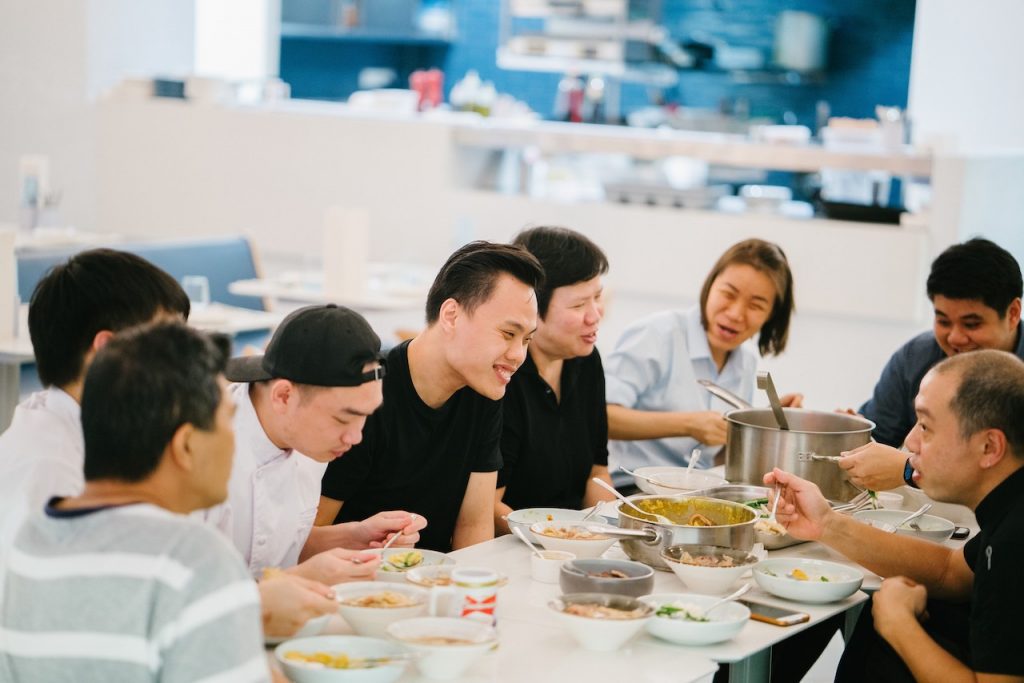
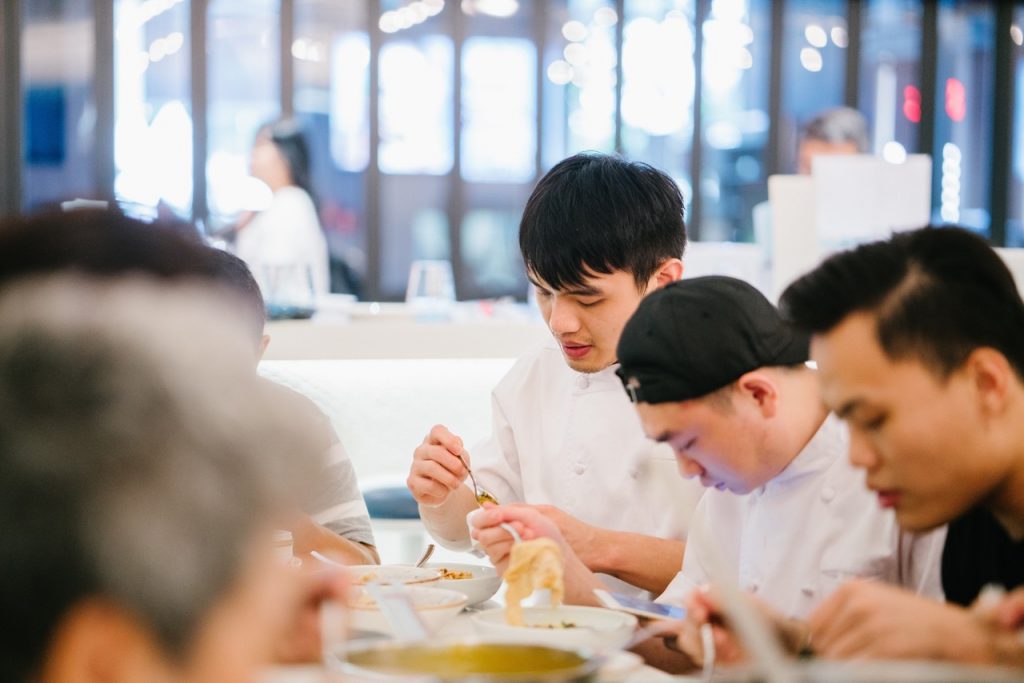
One French restaurant, I was told, caters bland, unhealthy meals for its kitchen, leaving those who want something more wholesome no choice but to spend their paychecks at a nearby food court.
“To be honest, what we do here is one of the better ones already,” Sebastian tells me.
And he’s right. Because VENUE By Sebastian closes after lunch to prepare for dinner service, they occasionally have time to actually sit down and eat. On busier days, the team eats in shifts. Most restaurants don’t get to do this for one of two reasons: they can’t spare the time, or they can’t spare the manpower to cook for the team.
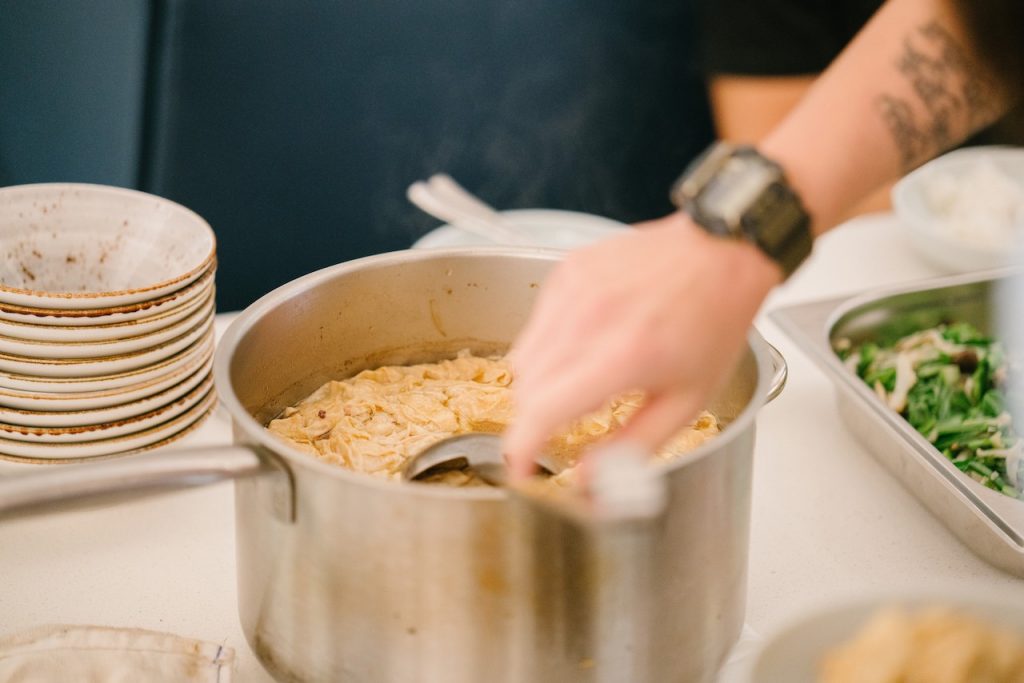
This is Joy, who runs the coffee bar and casual dining concept VXX Co-operative on Foch Road with her business partner Aslam. Before she got her own place, she worked in a string of cafes where staff welfare wasn’t necessarily a priority. But instead of putting the blame on any one person or bad habit, she shifts our discussion to that of the wider issue that is industry culture.
“When you first join a place, and realise that no one is eating during lunch, you’re afraid to say something about it,” she says.
“You feel pai seh because no one else is doing it, and you don’t want people to think that you’re slacking off or question your commitment to the team.”

In one instance, one of her managers got so stressed out by hunger and the peak hour rush that he essentially chased every customer out and closed the cafe so he and everyone could eat lunch. But this incident was an exception. Usually he didn’t eat, and neither did his staff.
When it comes to working in F&B, there’s most definitely a kind of masochistic element involved. On one hand, a team grows closer to each other when they suffer together. On another, there’s a sense of accomplishment that comes with having made it through a particularly rough day.
It’s a rare kind of pleasure not everyone understands.
At the same time, staff meals are undoubtedly an opportunity to boost morale and help employees feel more invested in their work. Besides, there’s no shortage of literature out there on how happy employees make for higher productivity and happier customers.
To 26 year-old Pamelia Chia, staff meals are “little bursts of freedom in the very rules-bound setting of the professional kitchen”. She’s a line cook at Candlenut, where everyone is assigned staff meals on a weekly basis, and it’s up to them to decide what they want to cook. Ingredients for staff meals are ordered along with the rest of the restaurant’s supplies, and if anyone has to buy their own ingredients, they get reimbursed.
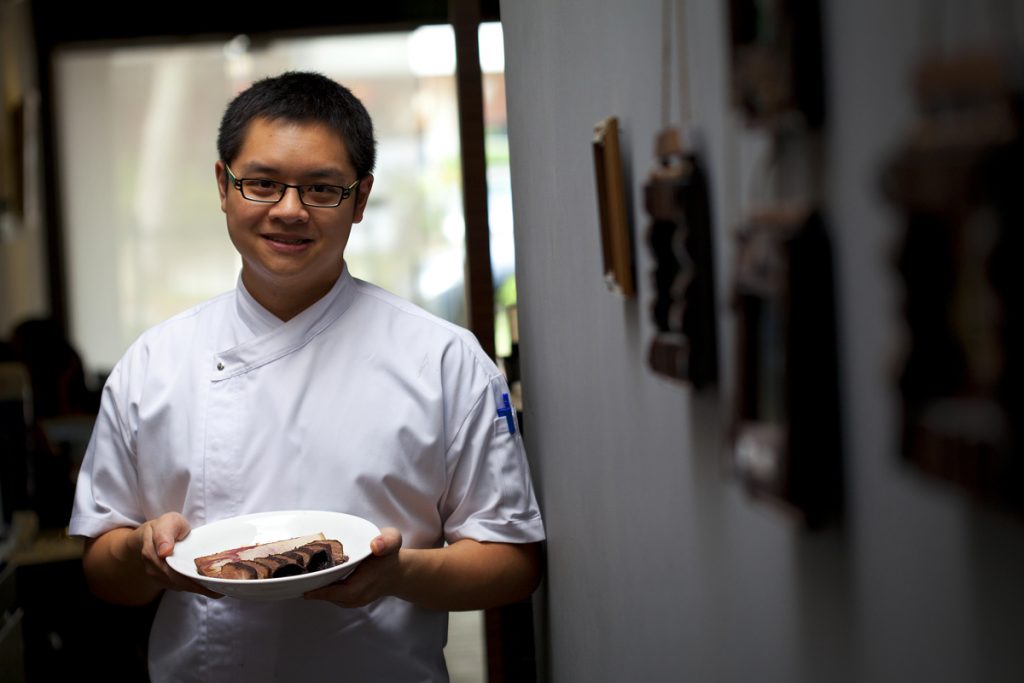
“In that sense, when a new member of the team cooks staff meal, it can be very telling of their skill level and confidence in the kitchen and it gets judged as much as everything else that you do on a daily basis.”
Adding that staff meals can also serve as springboards for new dishes on the menu, she tells me about a snapper curry on their menu that resulted from a colleague’s fish curry that was made from a rempah they have in the kitchen.

While it’s easy to argue that staff meals should look like this in every restaurant, many establishments have to balance preparation time, resources, and manpower to make this happen.
More often than not, employees just get a meal allowance. Pamelia tells me that this is how it worked at her previous workplace, and she recognises that the system they now enjoy at Candlenut is truly a luxury.
This, I would argue, is the bare minimum: that staff get food made to be enjoyed, that isn’t simply functional and flavourless. Even if they have to eat squatting behind the bar or in the back alley, food that is convenient, tasty and wholesome still beats nearly inedible meals like oily and flavourless bee hoon.
This is Singapore after all. Food is central to who we are; especially so for those who can spend up to 16 hours a day on their feet feeding others.

